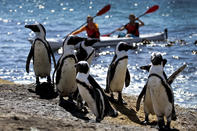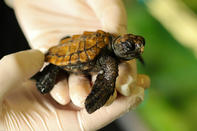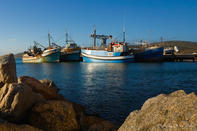Unique and Diverse
South Africa’s marine life is unique, beautiful and diverse - but it is under threat. Increased coastal development, negative human activity and climate change have heavily contributed to the loss of marine life and the destruction of the ocean. It is of vital importance to conserve and protect the country’s amazing coastline and marine species so that we do not lose an essential part of our environment.

In South Africa, overfishing and pollution have had negative effects on the marine life that thrives in both the Atlantic and Indian oceans. Oceans produce 70% of the planet’s oxygen, driving the earth’s weather system and providing us with bountiful amounts of food, so a healthy ocean is important for humanity. The sustainable use of oceans should be at the forefront of South Africa’s conservation efforts, and various organisations have been implementing programs to ensure no marine animal goes extinct.
Threatened Marine Life

There are various marine species on the coast of South Africa that are conserved and protected due to the threat of extinction. On the Garden Route, the Knysna seahorse calls three different estuaries in South Africa home, namely Knysna, Swartvlei, and Keurbooms. Major industrial developments in these areas has threatened the seahorse’s survival, with habitat loss and continued fishing being the biggest challenges. SANParks are implementing restrictions on further urban development around the Knysna estuary, and The Knysna Basin Project are involved with research on the Knysna seahorse’s habitat - their reports contribute to a better protected lagoon and estuary.
The African penguin is found along the coast of the Western Cape in small colonies, but are victims of severe habitat loss. Years of egg-poaching and overfishing of their main food sources has led to the reestablishment of small colonies in Simon’s Town, Langebaan and Hermanus.
Sea turtles are endangered due to the state of beaches - their nesting area. Pollution, construction, erosion are all part of their habitat loss. Sometimes they are caught in fishing nets or they mistake plastic in the ocean for food, which further puts them at risk. St. Lucia Wetlands Park in KwaZulu-Natal aims to conserve their turtles through raising awareness, rehabilitation and protecting their fragile ecosystem. The Two Oceans Aquarium in Cape Town has a turtle rehabilitation program that helps injured turtles to health, and then they are released into the ocean.
Abalone are heavily poached by illegal traders, and has become a severe problem on the West Coast. Law enforcement has intervened through hefty fines and prosecution of illegal poaching. The African black oystercatcher is also a protected species, as only 10 000 are left in South Africa. These iconic coastal birds are facing habitat loss due to negative human activity on beaches.
Coastal Management

Marine and Coastal Management (MCM) is the regulatory authority responsible for managing all marine and coastal activities in South Africa and shares the management of its 19 marine protected areas with the South African National Parks.
In addition to fishing and diving, Marine and Coastal Management manages and monitors our coastal resources. These include our sensitive estuaries, diverse sea birds such as the African black oystercatcher, Damara tern and gannets, dune systems and fishing harbours. MCM is also responsible for monitoring and preventing marine pollution. South Africa manages its coast and marine zones in an integrated way.
Marine and Coastal Management employees carry out research on more than 200 species of fish each year so that they can advise MCM and the Minister of Environmental Affairs and Tourism on the amount of fish allowed to be harvested by commercial fisheries. They also regulate the use of vehicles in the coastal zone – vehicles may not be used on any beach without the written authorisation of MCM. All boat launching sites must also be licensed in terms of these Regulations.
 South Africa boasts exceptionally rich marine life. The country has a huge diversity of marine ecosystems and a variety of species...
South Africa boasts exceptionally rich marine life. The country has a huge diversity of marine ecosystems and a variety of species... Hermanus lies about 115 kilometres southeast of Cape Town. A reported 32 species of hard and soft corals, including Gorgonians, sea pens and...
Hermanus lies about 115 kilometres southeast of Cape Town. A reported 32 species of hard and soft corals, including Gorgonians, sea pens and...